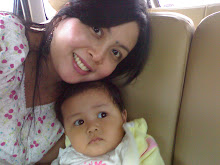| Six simple steps to help you to get the best out of your Treasures nappy: |
Step 1
| Open your Treasures nappy and check that the leak guards are sitting up. If they are lying flat, run your finger lightly down the elasticized leak guard join, see picture at right, so it springs up off the surface of the nappy. This is one of the most common causes of nappy leakage, so it’s worth getting into the habit of checking the leak guards every time. |
Step 2
| Place the opened nappy under the baby with the front tape closest to you. Bring the front of the nappy up between the baby’s legs and spread it over his tummy. |
Step 3
| With one hand on the nappy and baby, open grip tabs and attach it to the frontal tapes by pressing firmly. Repeat on the other side. |
Step 4
| All done! Because both Treasures Ultra and Treasures Giggles have refastened able grip tabs you can refasten or reposition tabs as often as required. |
Step 5
| It’s a good idea to flush any excess soiling down the toilet. But never flush your Treasures nappy away. Roll into a tight ball and use the tabs to seal. Please always throw your nappy in the rubbish. |
Tips:
| For novice nappy users, particularly grandparents who have never used nappy, it may be worth telling them that the pictures go at the front. We have heard of the occasional person trying to put them on backwards! Some bigger babies learn how to take off their nappies when their parents aren’t looking, with very messy consequences. You may find that if you put them on backwards for a couple of days, your baby will find it so difficult to get them off that he’ll stop trying. Many mums find if they tuck their son’s penis down, their nappies are less prone to leak. |
Are you ready to go up a size?
| Your baby’s nappy is more likely to leak when you are ready to go up a size. How do you tell? Keep an eye on the weight range on the packs and watch for tell-tale red marks left around your baby’s legs or tummy from nappies that are just a little too tight. Remember the weight is only a guide. The correct size will also depend on the ‘shape’ of your baby. |
| |
How to avoid Nappy Rash
| However careful you are to keep your baby’s skin clean and dry, most babies will get nappy rash at some stage.
Most nappy rash is caused by the breakdown of urine and faces into ammonia, which irritates the skin. It’s less common in newborns, as their nappies are changed often, but can become a problem when babies start sleeping longer at night.
Disposable nappies have been shown to be the best for avoiding nappy rash. Treasures Ultra nappies are highly absorbent and quickly draw moisture away from the skin.
Even if your baby is in a disposable nappy, it’s important to change your baby as soon as you can after he’s had a bowel motion.
Treasures Ultra Newborn nappies have a specially designed Air Cell Absorption System, a soft woven layer that draws, disperses and contains a newborn’s runny pools.
When you change your baby, gently clean and dry the skin, wiping from front to back for girls. Always clean in all the little creases.
Letting your baby air her bottom once or twice a day will also help prevent nappy rash. Barrier creams, powders and ointments are the best first line of defense against nappy rash. Before applying them, make sure the skin is clean and dry.
If nappy rash persists talk to your pharmacist, GP or Plunked nurse. Your baby may have thrush or a bacterial infection. |

No comments:
Post a Comment